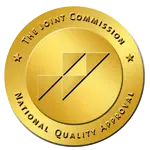Despite what individuals may believe, addiction is not a result of moral weakness or lack of willpower. Addiction is a brain disease that affects how an individual thinks, feels, and behaves. Substance use disorders (SUDs) and mental health disorders have a glaring stigma over them, causing individuals with them to feel embarrassed, shameful, and depressed. These stigmas, however, are not fact. Learning why stigma exists – especially pertaining to addiction – and how to challenge it is necessary for helping individuals get the professional treatment they need to establish and maintain recovery.
While the nation has come a long way in dispelling stigma, there is still an undeniable stigma surrounding individuals with addiction. The Centers for Disease Control and Prevention (CDC) defines stigma as “discrimination against an identifiable group of people, a place, or a nation.” Examples of discriminatory behavior include:
Contrary to what some may think, there is no excuse for discriminatory behavior. Many may be surprised to learn that stigma often develops from misinformation and a lack of understanding about a person, group, or situation. This certainly remains true for addiction stigma.
According to the National Institute on Drug Abuse (NIDA), tens of thousands of individuals are losing their lives every year as a result of addiction. Consider the numerous lives of extended family members and friends that are also impacted by the chronic alcohol and drug use of their loved ones. While there are effective addiction treatments available, they are not being utilized as widely as they could be. Additionally, many individuals who could benefit from treatment do not seek it out.
Unfortunately, one undeniable force keeping many individuals from utilizing and seeking treatment is stigma. Similar to the stigma of other mental health disorders, addiction stigma developed decades ago when there was no understanding of addiction as a brain disease. This stigma has been carried throughout history, leading to further discrimination against those who struggle with it.
The CDC further explains that stigma hurts everyone. It creates unnecessary fear, anger, and distress toward individuals that need help rather than focusing on the disease that is interfering with the individual’s life. It is common for those with addiction to hide their symptoms or lie about their condition in an effort to avoid having their struggles exposed to their families or communities. In turn, stigma delays treatment entry and treatment engagement and ultimately keeps individuals from establishing lasting sobriety and healing.
Becoming familiar with different examples of addiction stigma can help individuals better recognize it as it surfaces throughout their lives. The following are some examples of addiction stigma.
It is important to remember that addiction is a disease. Repeated substance abuse impairs brain structure and associated functioning. These brain changes make it easier for an individual to use substances repeatedly without considering the potential consequences of doing so.
When addiction develops, an individual’s brain and body may experience uncomfortable cravings when not using alcohol or other drugs. These are also known as withdrawal symptoms. These cravings urge the individual to use substances to cease cravings. Eventually, an individual may use substances no longer to achieve a high but rather to feel normal as their brain acclimates to the effects of recurrent drug use.
Recognizing that repeated substance abuse is not a choice for individuals with addiction can be helpful when encouraging treatment for a loved one. Harm reduction and treatment services must be readily available for individuals who require professional intervention to recover.
The stigma that recovery is not always possible for individuals with addiction is incredibly harmful. Individuals that believe this may have loved ones who have relapsed or experienced additional challenges throughout their recovery journey. It is important to understand that relapse is often a part of the recovery process. Additionally, relapse does not equate to failure. Fortunately, most treatment programs today use relapse prevention as a central element of their interventions.
The NIDA explains that addiction can be treated successfully. Although there is no “cure,” addiction is a treatable condition. Treatment helps clients become more aware of the connections between their thoughts, emotions, and behaviors. According to the NIDA, treatment also “enables people to counteract addiction’s disruptive effects on their brain and behavior and regain control of their lives.”
There are many ways that individuals can work to combat the stigma of addiction. First and foremost, it is vital to recognize that addiction does not discriminate. In other words, addiction can happen to anyone. Once a person truly understands this, they will be more willing to guide and support their loved ones who are struggling.
Here are some additional ways to combat stigma:
Addiction stigma acts as a barrier to treatment, causing individuals with substance use disorder (SUD) to feel embarrassed and shameful for asking for help. It is important to remember that stigma is not fact; it results from misinformation and lack of education. To combat stigma, individuals can become educated on addiction as a disease. Pathways Recovery Center is an addiction treatment center that understands how stigma can influence disinterest in treatment entry and engagement. We are here to walk with you or your loved one on your road to sobriety. We offer a number of treatment programs and services to individualize our client care. To speak with our staff, give us a call today at (888) 771-0966.








